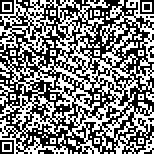| 摘要: |
| [摘要] 目的 分析儿童克罗恩病(CD)合并肛周病变的临床特征。方法 选取郑州大学附属儿童医院消化内科2015年1月至2020年1月收治的38例CD患儿的临床资料,根据肛周病变情况分为肛周病变组(15例)和无肛周病变组(23例)。比较两组并发症发生情况、实验室检测结果、内镜检查结果、儿童克罗恩病活动指数(PCDAI)评分等。结果 38例CD患儿中合并肛周病变15例(39.45%),其中肛瘘6例,肛周脓肿7例,皮赘1例,直肠阴道瘘1例。肛周病变组年龄和血清白蛋白(ALB)水平低于无肛周病变组,入院时PCDAI评分高于无肛周病变组,差异均有统计学意义(P<0.05)。两组性别、C反应蛋白(CRP)、血沉(ESR)和病变分型比较差异均无统计学意义(P>0.05)。肛周病变组发生并发症5例(33.33%),无肛周病变组发生并发症9例(39.13%),差异无统计学意义(P=0.746)。结论 低龄男性CD患儿更易合并肛周病变,对该类患儿临床医师应予以重视,完善检查。 |
| 关键词: 克罗恩病 肛周病变 临床特征 |
| DOI:10.3969/j.issn.1674-3806.2021.09.06 |
| 分类号:R 725.7 |
| 基金项目:河南省医学科技攻关项目(编号:201702324) |
|
| Analysis of clinical characteristics of Crohn′s disease complicated with perianal lesions in children |
|
GUO Ya-qiong, YU Jing, GAO Ruo-fei, et al.
|
|
Department of Gastroenterology, Children′s Hospital Affiliated to Zhengzhou University, Henan Children′s Hospital, Zhengzhou Children′s Hospital, Henan 450003, China
|
| Abstract: |
| [Abstract] Objective To analyze the clinical characteristics of Crohn′s disease(CD) complicated with perianal lesions in children. Methods The clinical data of 38 CD children admitted to the Department of Gastroenterology, Children′s Hospital Affiliated to Zhengzhou University from January 2015 to January 2020 were selected and divided into perianal lesion group(15 cases) and non-perianal lesion group(23 cases) according to their different perianal lesions. The incidence of complications, laboratory test results, endoscopy results, and Pediatric Crohn′s Disease Activity Index(PCDAI) scores were compared between the two groups. Results Among the 38 CD children, 15 cases(39.45%) were complicated with perianal lesions, including 6 cases of anal fistula, 7 cases of perianal abscess, 1 case of skin tag, and 1 case of rectovaginal fistula. The age and the level of serum albumin(ALB) of the perianal lesion group were lower than those of the non-perianal lesion group, and the PCDAI scores of the perianal lesion group were higher than those of the non-perianal lesion group at admission, and there were significant differences between the two groups(P<0.05). There were no significant differences in gender, C-reactive protein(CRP), erythrocyte sedimentation(ESR), and lesion type between the two groups(P>0.05). Complications occurred in 5 cases(33.33%) in the perianal lesion group, and 9 cases(39.13%) in the non-perianal lesion group, and the difference was not statistically significant(P=0.746). Conclusion Young male children with CD are more likely to be complicated with perianal lesions. Clinicians should pay attention to this type of child patients and improve the examinations for them. |
| Key words: Crohn′s disease(CD) Perianal lesions Clinical characteristics |

